
Centaurea diffusa, also known as diffuse knapweed, white knapweed or tumble knapweed, is a member of the genus Centaurea in the family Asteraceae. This species is common throughout western North America but is not actually native to the North American continent, but to the eastern Mediterranean.
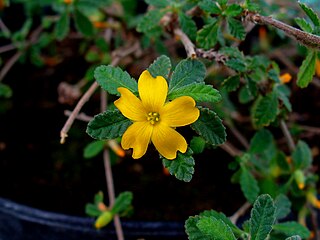
Turnera diffusa, known as damiana, is a shrub native to southern Texas in the United States, Central America, Mexico, South America, and the Caribbean. It belongs to the family Passifloraceae.

Lophophora diffusa, commonly known as false peyote, is a species of plant in the family Cactaceae and one of the species in the Lophophora genus. It is endemic to Mexico in the outskirts of Querétaro. This species contains zero to trace amounts of mescaline; pellotine, whose psychoactive effects are comparatively minimal, is the principal alkaloid. The species name diffusa refers to the flat tubercles that are outspread without the plant having prominent ribs.
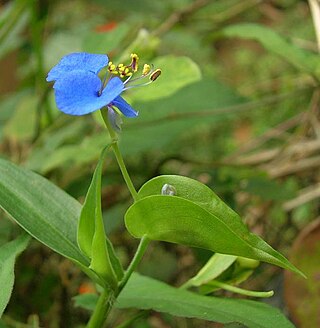
Commelina caroliniana, sometimes known as the Carolina dayflower, is an herbaceous plant in the dayflower family native to India and Bangladesh. Both the scientific name and the common name are misleading as the plant was described based on specimens found in the southeastern United States before it was known that the plant had in fact been introduced from India. It was most likely introduced to South Carolina in the late 17th century along with rice seed from India. The plant has also been recently reported from South Korea. Its flowers emerge from summer to fall and rarely into the winter.
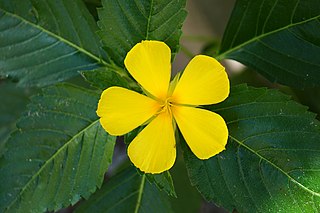
Turnera ulmifolia, the ramgoat dashalong or yellow alder, is a species of plant of family Passifloraceae, native to Mexico and the West Indies. A recent study found that yellow alder potentiated the antibiotic activity against methicillin-resistant Staphylococcus aureus (MRSA).

Boerhavia diffusa is a species of flowering plant in the four o'clock family which is commonly known as punarnava, red spiderling, spreading hogweed, or tarvine. It is taken in herbal medicine for pain relief and other uses. The leaves of Boerhavia diffusa are often used as a green vegetable in many parts of India.
Montia diffusa is a species of flowering plant in the family Montiaceae known by the common names branching montia and spreading miner's lettuce native to North America.

Phlox diffusa is a species of phlox known by the common name spreading phlox. It is native to western North America from British Columbia to the southwestern United States to the Dakotas, where it grows in many types of habitat, including rocky, high elevation mountain slopes. It is a very compact mat-forming perennial herb growing in cushions or patches of short, decumbent stems. The linear, lance-shaped, or needle-like leaves are no more than 1.5 centimeters long and are oppositely arranged in bundles on the short stems. The inflorescence is a solitary tubular flower around a centimeter long. It has a flat white or pale pink or blue corolla with five lobes each just under a centimeter in length.

Scleromitrion diffusum, synonyms including Hedyotis diffusa, is a species of flowering plant in the family Rubiaceae. It is a herb used in traditional Chinese medicine, known as Chinese: 白花蛇舌草; pinyin: báihuā shéshécǎo; lit. 'white flower snake-tongue grass', sometimes abbreviated to 蛇舌草 shéshécǎo. It is sometimes combined with Siraitia grosvenorii and Scutellaria barbata to make hot drinks like lohoguo of guongsei or luohanguo pearl and sheshecao beverage.

Diffutidin is a flavan, a type of flavonoid. It can be found in Canscora diffusa.

Canscora is a genus 9 to 30 species of plants in the family Gentianaceae. Canscora is native to Africa, Asia and Australia. Some species are used medicinally.

Hoppea dichotoma is a plant species in the genus Hoppea.
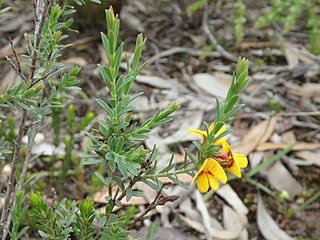
Eutaxia diffusa, commonly known as spreading eutaxia, is a shrub species in the family Fabaceae. The species is endemic to Australia.

Iresine diffusa, or Juba's bush, is a species of plant in the family Amaranthaceae. Its form Iresine diffusa f. lindenii, formerly Iresine lindenii, is commercially available as an ornamental.

Metrosideros diffusa, the white rātā, climbing rātā or in Māori akakura, is a forest liane or vine endemic to New Zealand. It is one of a number of New Zealand Metrosideros species which live out their lives as vines, unlike the northern rata (M.robusta), which generally begins as a hemi-epiphyte and grows into a huge tree. It is one of three white flowering rātā vines. White rātā is the most common climbing rātā in the wild, found naturally in lowland forests throughout the North, South and Stewart islands.
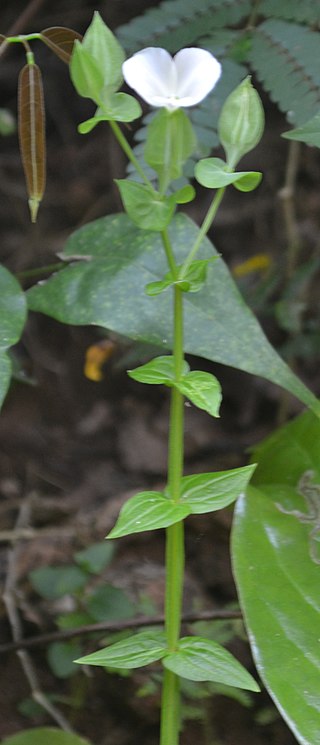
Canscora alata is a herbaceous species of plant in the family Gentianaceae, with a self-supporting growth habit. It is commonly known as samgamoli, kanjenkora,sangupushpi, sangupushpi, kanjenkora and samgamoli. It is growing in moist deciduous forests, also in the plains. it is widely distributed in tropical Africa and South Asia.

Grevillea diffusa is a species of flowering plant in the family Proteaceae and is endemic to the Sydney region of New South Wales. It is a low, compact shrub with elliptic to linear leaves, and dark red, or dark crimson to scarlet and burgundy-coloured flowers.

Canscora bhatiana is a flowering plant in the family Gentianaceae. It is named after Prof. K. Gopalakrishna Bhat, Department of Botany, Poornaprajna College, Udupi.
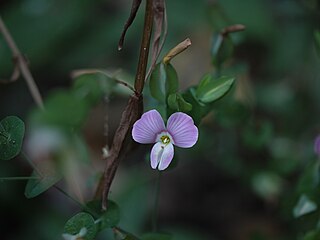
Canscora perfoliata, the pierced leaf canscora, is a herbaceous species of plant in the family Gentianaceae. It is endemic to the Western Ghats.


















